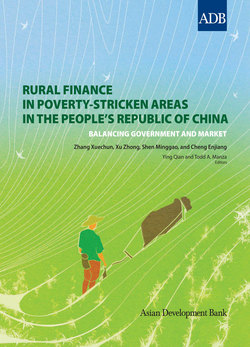Читать книгу Rural Finance in Poverty-Stricken Areas in the People's Republic of China - Xuechun Zhang - Страница 7
На сайте Литреса книга снята с продажи.
Introduction
ОглавлениеDespite significant progress in the general financial reform of the People’s Republic of China (PRC), rural financial reform has been lagging. It has been 16 years since the establishment of the Agricultural Development Bank of China in 1994, 14 years since the separation of the Agricultural Bank of China from the rural credit cooperatives (RCCs) in 1996, and 7 years since the current round of RCC reform began in 2003. Nonetheless, rural financial policies, especially those targeting poverty-stricken areas, are still in the exploration stage.
Many constraints on reform remain to be addressed. For example, urban finance is used to guide rural finance, and informal finance is simply replaced by formal finance. This has led to the domination of RCCs in rural areas and difficulty in enacting rural financial innovation. In addition, the mission of rural finance to sustainably support sannong—agriculture and agricultural industry, including rural areas and farmers—remains unclearly defined. Rural financial institutions should support sannong in a financially sustainable manner and stop the vicious cycle of placing the heaviest burden of support on the poorest areas, which undermines sustainability. Third, the moral hazard of local government intervention in rural financial institutions must be reduced. Government intervention increases the cost of rural finance and creates the perception that rural finance is not sustainable without government support and direction. These constraints call for changes in perception, an improved financial environment, and innovation.
